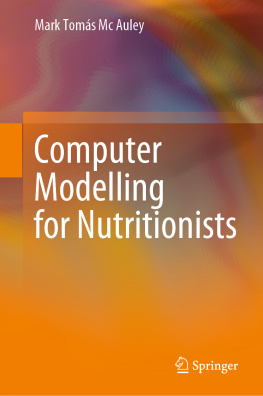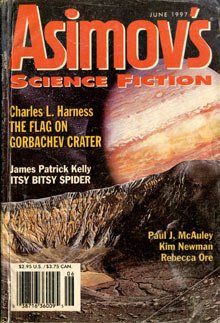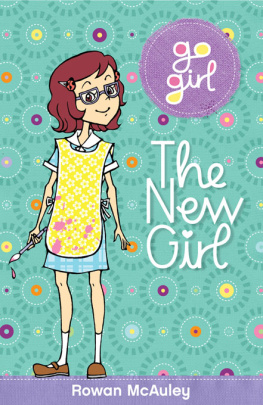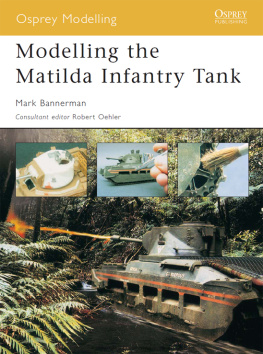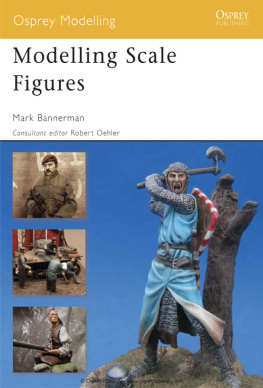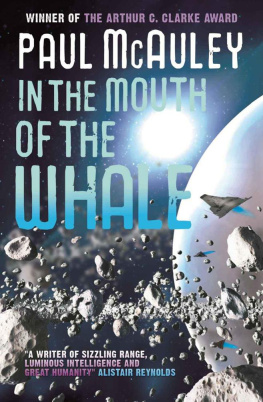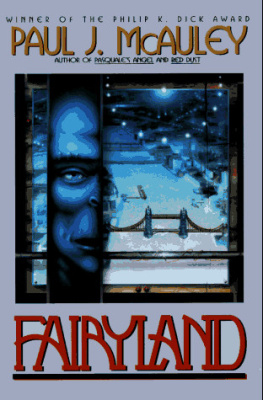Mark McAuley - Computer Modelling for Nutritionists
Here you can read online Mark McAuley - Computer Modelling for Nutritionists full text of the book (entire story) in english for free. Download pdf and epub, get meaning, cover and reviews about this ebook. year: 2019, publisher: Springer, genre: Science. Description of the work, (preface) as well as reviews are available. Best literature library LitArk.com created for fans of good reading and offers a wide selection of genres:
Romance novel
Science fiction
Adventure
Detective
Science
History
Home and family
Prose
Art
Politics
Computer
Non-fiction
Religion
Business
Children
Humor
Choose a favorite category and find really read worthwhile books. Enjoy immersion in the world of imagination, feel the emotions of the characters or learn something new for yourself, make an fascinating discovery.
- Book:Computer Modelling for Nutritionists
- Author:
- Publisher:Springer
- Genre:
- Year:2019
- Rating:4 / 5
- Favourites:Add to favourites
- Your mark:
- 80
- 1
- 2
- 3
- 4
- 5
Computer Modelling for Nutritionists: summary, description and annotation
We offer to read an annotation, description, summary or preface (depends on what the author of the book "Computer Modelling for Nutritionists" wrote himself). If you haven't found the necessary information about the book — write in the comments, we will try to find it.
Computer Modelling for Nutritionists — read online for free the complete book (whole text) full work
Below is the text of the book, divided by pages. System saving the place of the last page read, allows you to conveniently read the book "Computer Modelling for Nutritionists" online for free, without having to search again every time where you left off. Put a bookmark, and you can go to the page where you finished reading at any time.
Font size:
Interval:
Bookmark:
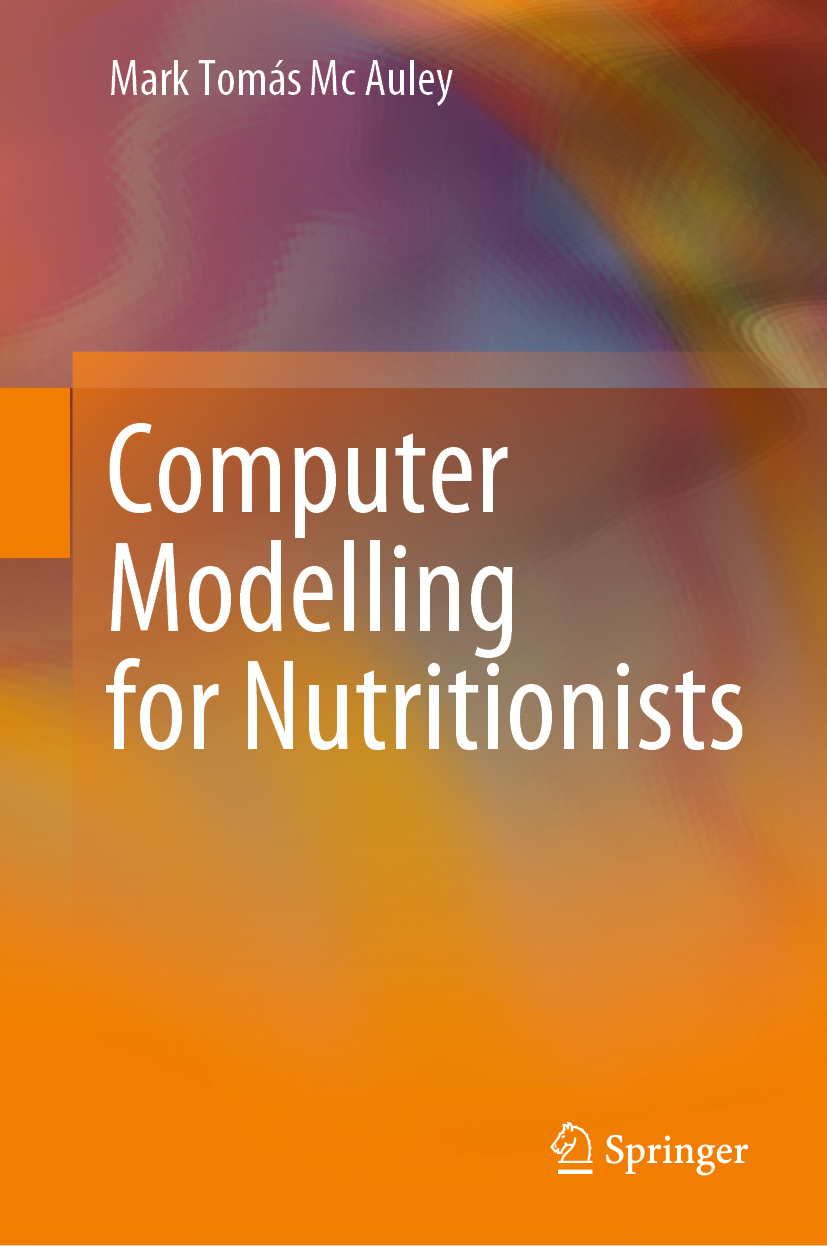

This Springer imprint is published by the registered company Springer Nature Switzerland AG
The registered company address is: Gewerbestrasse 11, 6330 Cham, Switzerland
This book is about computational modelling of nutrient focused biological systems. The book is aimed at students, researchers, and those with an interest in learning how to build a computational model. The book is the product of many years of teaching computational modelling to undergraduates, postgraduates, and researchers with limited, or no background in computational modelling. What I learned from these experiences is those new to modelling are invariably apprehensive about it and approach it with a degree of trepidation, or even scepticism. However, from tentative initial steps, they quickly realize that modelling is not as challenging or as academically intimidating as they initially perceive it; and after gaining familiarity with the essential components of model building they rapidly become cognizant that it offers an alternative lens to view a biological system and learn new insights about its underlying dynamic behaviour.
In this book, I provide a practical introduction to modelling, for those who are interested in exploring the dynamics of nutrient-based systems. My rationale for undertaking this project is based on my experience of interacting with nutritionists in recent years. As a result of many fruitful discussions, I identified a growing need for a book of this nature, which is specifically tailored to nutritionists. My aims are to provide the reader with a solid grounding in computational modelling, and how it dovetails within the burgeoning field of systems biology. For the reader, this will involve learning how a model is assembled, what software tools are available for model building, what the different paradigms are for simulating a model, and how to analyse and interpret the output from in silico simulations. The only expectation I make of you, as a reader, is that you are enthusiastic about learning how to use new software tools. In exchange for your engagement, I will provide you with ample practical exercises, which will help to consolidate your learning and will make your computational modelling journey a rewarding and enjoyable experience.
I sincerely acknowledge Dr. Amy Morgan for proofreading this manuscript and for providing advice on the formatting of figures. I would also like to acknowledge Dr. Bernard Corfe, at the University of Sheffield for providing me with the opportunity to teach computational modelling to his M.Sc. in Oncology students, for the last 5 years. These sessions helped to inform the development of much of the material used in this book. Finally, I would like to thank all the students and researchers I have taught computational modelling over the years. Your open-mindedness, enthusiasm, and feedback have been invaluable in shaping the content of this book.
is a senior lecturer in Chemical Engineering at the University of Chester. He has an undergraduate B.Sc. (Hons) degree in biochemical sciences from Ulster University, a M.Sc. in computer science, also from Ulster University, and a Ph.D. in mathematical modelling from Newcastle University. In addition, he is a qualified secondary school teacher, having specialized in biology and mathematics. His research interests are computational modelling of nutrient-based systems and their intersection with ageing, specifically, folate and cholesterol metabolism.
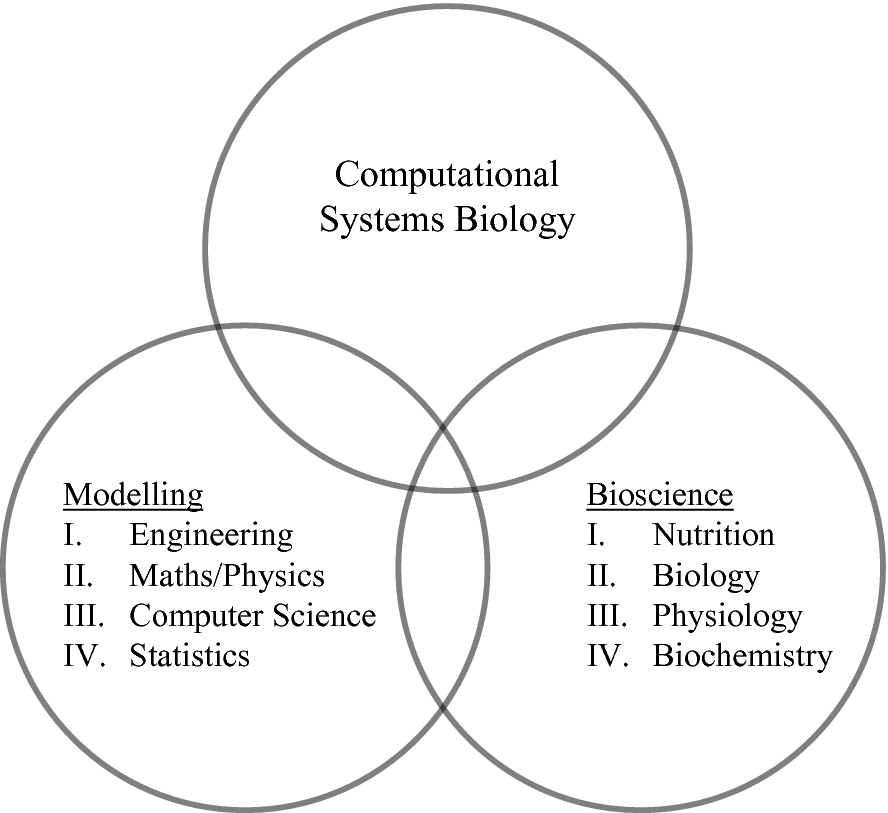
The interdisciplinary nature of computational systems biology
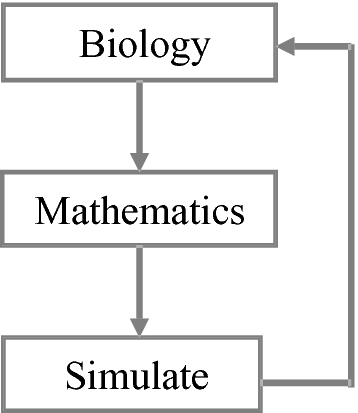
The cyclical nature of computational systems biology
The contribution this methodology can make to our understanding of intricate biological systems is evident; as output from model simulations can be used to explore the behaviour of a biological system under a range of conditions [].
In addition to the generic advantages of computational modelling outlined in Sect. ]. Although computational modelling does not completely solve all these problems it provides a means of alleviating them. In the following sections we will observe how modelling has been used to elucidate two keys areas of nutrition.
Font size:
Interval:
Bookmark:
Similar books «Computer Modelling for Nutritionists»
Look at similar books to Computer Modelling for Nutritionists. We have selected literature similar in name and meaning in the hope of providing readers with more options to find new, interesting, not yet read works.
Discussion, reviews of the book Computer Modelling for Nutritionists and just readers' own opinions. Leave your comments, write what you think about the work, its meaning or the main characters. Specify what exactly you liked and what you didn't like, and why you think so.

